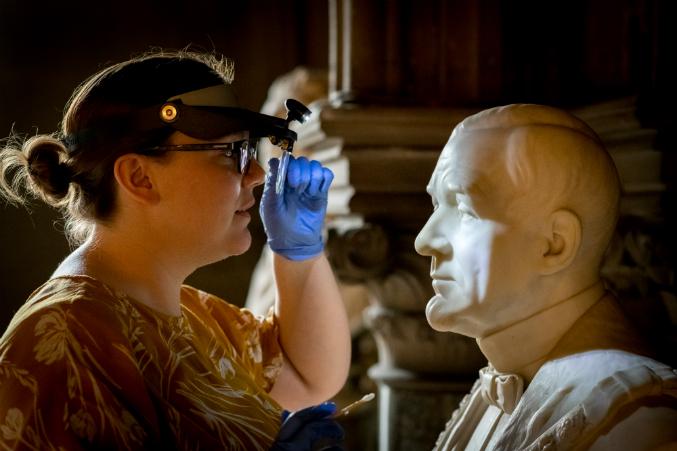They might be made of stone, but Manchester Town Hall’s sculpture collection is on the move.
Since Manchester’s Grade I-listed Town Hall temporarily closed in January to enable the start of work to repair, protect and partially restore the building, staff have been planning the relocation of its impressive collection of historical treasures before any physical works can start.
The six-year Our Town Hall project means that the 140-year old icon’s fantastic collection of heritage items ,including furniture, paintings, textiles and civic gifts,must be carefully removed by specialists and stored in climate-controlled conditions off-site.
But many of the sculptures and other items will be loaned to relevant venues around the city, so that they can remain on display before returning to the Town Hall when it reopens to the public in 2024.
One of the key aims of the Our Town Hall project is to make the building more accessible to residents and visitors, and many more of Manchester’s civic treasures will eventually be on general display to help tell the city’s story, and its people’s stories.
Councillor Bernard Priest, Lead Member for the Our Town Hall Project, said: “One of the key aims of the Our Town Hall project is to improve access to our civic treasures and in that spirit, we’ve worked with organisations across the city to ensure that key Town Hall sculptures will remain on public display in carefully selected Manchester venues while this once-in-a-lifetime project is completed.
“It’s great to know that some of the Town Hall’s best-known sculptures and artefacts will be proudly displayed at locations where their historical importance will really resonate.”
For example, the newest addition – a bust of the community and peace activist Erinma Bell made of melted-down, weapons amnesty guns will go on display at the People’s History Museum next month, as part of an exhibition being held to mark the 100th anniversary of the Representation of the People Act.
Many other pieces are being exhibited in accessible public spaces, such as Manchester Cathedral, where Bishop James Fraser (1818-1885), the second Bishop of Manchester and an active supporter of the Co-operative Movement, will be displayed.
A bust of Sir Rowland Hill, who was responsible for the development of the modern postal system in the 19th century, will move to the Post Office branch in the Town Hall Extension. And a ‘triptych’ bust of the famed conductor Sir John Barbirolli will move to The Bridgewater Hall.
A marble bust of Sir Charles Halle will go to the reception of Halle at St Michael’s, Ancoats, which is the base for the Halle Orchestra’s artistic and education activities and provides space for community events.
Salford Museum and Art Gallery will host a bust of the political activist Joseph Brotherton MP, who was the first Member of Parliament for Salford in 1832. A slave-trade abolition campaigner, Brotherton’s work also led to the foundation of the first public library in the building that houses the museum today.







